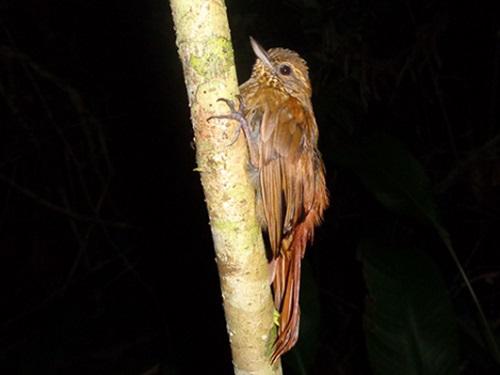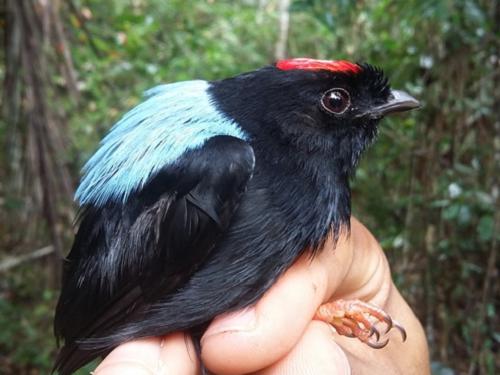Ícaro Menezes Pinto
Our project aims to unveil whether forest loss and fragmentation can affect the ecological interactions between birds and their food resources, herein plants and arthropods.

Glyphorynchus spirurus (Wedge-billed Woodcreeper).
This project will be carried out in 20 forests remnants of the Atlantic forest of the southern region of Bahia, Brazil. In each site, we will sample birds using a set of ten mist nets placed within the forest understory. Mist nets will be placed in the morning, remaining opened from 05:00 to 12:00 a.m., for 4 consecutive days in each campaign. All captured birds will be individually marked using a bird ring to identify recaptures, and forced to regurgitate using oral administration of tartar emetic, and defecate. Regurgitation samples and faeces of the frugivorous and insectivorous birds will be sent to the laboratory of Genetic engineering for the analysis of the samples using a technique known as Identification System Micronomic – DNA Barcoding.

Manacus manacus (White-bearded Manakin).
In the afternoon of the 1st day of sampling in each forest site, during each campaign, we will sample invertebrates using the branch-clipping technique, a method that consists of pruning branches of plants involved in collection bags, capturing invertebrates that are in the foliage. For this, we will establish five parallel transects (25 m long), distant 50 m apart, in each forest site, where 25 plants (50-200 cm high) will be drawn in the understory (five plants from each transect). We will sample litter invertebrates by placing 2 pitfalls at the end of each transect, totalizing 10 pitfalls per sample. Sampled invertebrates will be conditioned in plastic vials filled with alcohol for later identification in the laboratory. We will perform the identification according to the literature achieving the lowest possible taxonomic level. By comparing the richness and local abundance of insectivorous birds with the richness and abundance of arthropods, we can infer whether birds control arthropod populations based on networks of interactions.

Blue-backed Manakin (Chiroxiphia pareola).
In the same five transects, we will assess fruit availability in the forest understory. We will estimate fruit abundance by counting all plant individuals showing ripe and immature fruits, between 0.5 and ~ 7 m high. These plants will also be collected using pruning shears or, for those taller than 4 m. Exsiccates of plants will be prepared and sent for species identification at the Universidade Estadual de Santa Cruz (UESC) herbarium with the help of a specialist. Through this sampling, we will have information about what resources are available for the frugivorous birds, as well as an estimate of the amount of available resources for birds in the areas with different levels of forest cover and through the construction of networks of interaction between the birds and their respective resources we will know which plant species are affected by the loss of bird species.